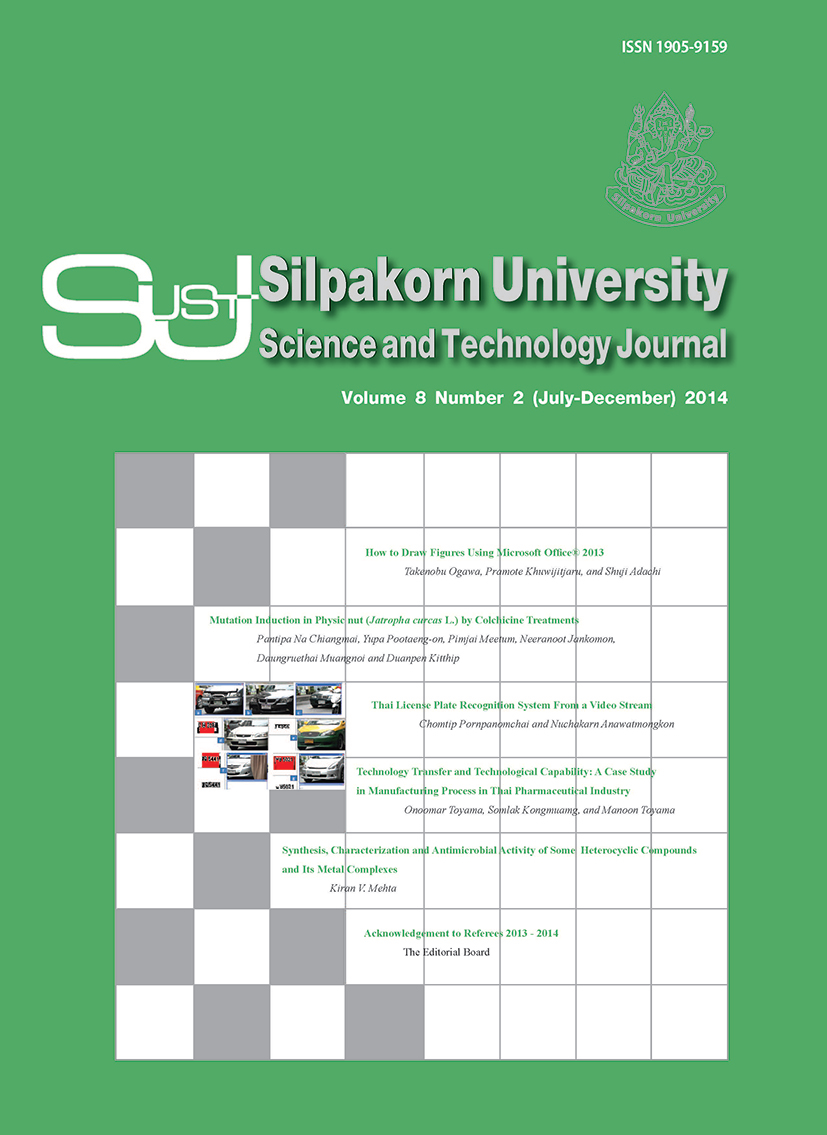Synthesis, Characterization and Antimicrobial Activity of Some Heterocyclic Compounds and Its Metal Complexes
Main Article Content
Abstract
New heterocyclic compounds containing quinoline fragment were synthesized. They were characterized by elemental analyses as well as IR and PMR spectroscopic analyses. These compounds were treated with metal (Mn(II), Ni(II) and Cu(II) salts to produce complexes. The complexes were identified and characterized by elemental analyses, IR and electronic spectral studies and magnetic moment studies. The magnetic behaviour and spectroscopic investigation of complexes indicate mononuclear octahedral structure of all the complexes. All heterocyclic compounds and metal complexes were screened for antimicrobial activity against Staphylococcus aureus, Pseudomonas aeruginosa, Bacillus subtilis, Escherichia coli and Klebsiella pneumonia using DMF as a solvent. The activity was compared with known antibiotics like Penicillin, Ampicillin, Tetracycline, Chloramphenicol and Norfloxacin.
Downloads
Article Details
References
Abou-Melha K. S. and Hanan, F. (2008) Synthesis, spectral and antimicrobial studies of rare earth metal complexes with schiff-base hydrazone containing quinoline moiety, Journal of Coordination Chemistry 61(12): 1862-1874.
Agui, H., Mitani, T., Izawa, A., Komatsu, T., and Nakagome, T.(1977) Studies on quinoline derivatives and related compounds-5:synthesis and antimicrobial activity of novel 1-alkoxy-1,4-dihydro-4-oxo-3-quinoline carboxylic acids. Journalof Medicinal Chemistry 20(6): 791-796.
Alazawi S. A. S. and Alhamadani A. A. S. (2007) Synthesis and characterization of mixed ligand complexes of 8- hydroxyquinoline and schiff base with some metal ions. Um-Salama Science Journal 4(1): 102-109.
Amin, M. A. S., Ismail, M. M., Barakat, S. E. S., Abdul-Rahman, A. A. A., Bayomi, A. H., and El-Gamal, K. M. A. (2004) Synthesis and antimicrobial activity of some new quinoline and1H-pyrazolo [3,4-b]quinoline derivatives, Bulletin of Pharmaceutical Sciences 27(2): Part 2:237-245.
Barry, A. L. (1986) Ed. Lorian, V., Procedure for testing antimicrobial agent in agar media: theoretical considerations: antibiotics in laboratory medicine, 2nd ed., Williams-Wilkins, Baltimore-London.
Da Silva, L. E., De Sousa Jr, P. T., Joussef, A. C., Piovezan, C., and Neves, A. (2008) Synthesis, structure and physicochemical properties of zinc and copper complexes based on sulfonamides containing 8-aminoquinoline ligands. Quimica Nova 31(5): 1161-1164.
Eswaran, S., Adhikari, A. V., and Shetty, N. S. (2009) Synthesis and antimicrobial activities of novel quinoline derivatives carrying 1,2,4-triazole moiety. European JournalofMedicinal Chemistry 44(11): 4637-4647.
Jones, R. N., Barry, A. L., Gaven, T. L., and Washington, J. A.(1984) Manual of clinical microbiology, 4th edn., American society for microbiology, Washington DC, 972-977.
Jumade, P. P., Wadher, S. J., Chourasia, A. J., Kharabe, U. V., Mude, D., and Yeole, P. G. (2009) Synthesis of newer mannich bases of quinoline derivative for antimicrobial activity. International Journal of Chemical Sciences 7(3): 1518-1530.
Kurtoglu, M. and Baydemir, S. A. (2007) Studies on mononuclear transition metal chelates derived from a novel (E,E)-dioxime: synthesis, characterization and biological activity. Journal of Coordination Chemistry 60: 655-665.
Mane, P. S., Shirodkar, S. G., Arbad, B. R., and Chondhekar, T. K.(2001) Synthesis and characterization of manganese (II), cobalt (II), nickel (II) and copper (II) complex bases of schiff base derivatives of dehydroacetic acid. Indian Journal of Chemistry 40(A): 648-651.
Rahmouni, N. T., Djebbar-Sid, S., Chenah, N., and Benali-Baitich,O. (1999) Synthesis, characterization and electrochemical behaviour of some manganese and copper complexes with tetradentate schiff base ligands, Synthesis and Reactivity inInorganicand Metal-Organic Chemistry 29(6): 979-994.
Rollas, S. and Kucukguzel, S. G.(2007) Biological activities of hydrazone derivatives, Molecules 12: 1910-1939.
Thakur, G. A. and Shaikh, M. M. (2006) Synthesis, characterization, antibacterial and cytotoxicity studies on some mixed ligand Th(IV) complexes. Acta Poloniae Pharmaceutica Drug Research 63(2): 95-100.
Vogel, A. I. (2004) Revised by Jeffery, G. H., Bassett, J., Mendham, J., Denney, R.C, Textbook of Quantitative Chemical Analysis6th ed., Pearson, New Delhi.
Xia, Y., Yang, Z. Y., Hour, M. J., Kuo, S. C., Xia, P., Bastow, K. F., Nakanishi, Y., Nampoothiri, P., Hackl, T., Hamel, E., and Lee, H. K. (2001) Antitumor agents. Part 204: Synthesis and biological evaluation of substituted 2-arylquinazolinones. BioorganicandMedicinal Chemistry Letters 11(9): 1193-1196.
Zurowska, B., Mrozinski, J., and Ochocki, J. (2007) Coordination properties of the diethyl 2-quinolilmethylphosphonate ligand with chloride and nitrate transition-metal salts. Materials Science-Poland 25(4): 1063-1074.

